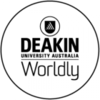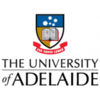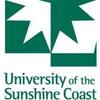Workshop Guidelines
http://vimeo.com/channels/coastaladaptation
Introduction
The aim of the Participatory Google Earth Mapping Workshop is to develop shared understandings about the impacts of climate change on the coast and to develop sustainable coastal adaptation pathways for specific locations. The workshop should be run in partnership with a local government or other coastal manager to ensure their needs are being closely met. The workshop can be targeted at key stakeholders and/or at the broad community.
The mapping process helps locate key sustainability ‘hotspots’ that provide a basis for interpretation and discussion. Being graphical, it incorporates diverse knowledges, perception, language and communication capacities. It can be applied at many geographical scales, across time frames, and in a wide variety of situations by a diversity of people with or without conventional literacy skills.
Materials and Methods
1. Materials needed include:
A workshop space with wireless Internet connectivity; 6 laptops loaded with Google Earth; 6 x A1 laminated maps of the LG area; 4 x A1 clear plastic transparent overlays for each map; permanent marker pens in four different colours for each table.
2. Personnel needed include:
- A workshop facilitator familiar with the process and with Google Earth
- A scribe familiar with Google Earth for each table
- A facilitator for each table
- Specialist speakers to provide information relevant to climate change impacts on the coast
- Key stakeholders and/or a stratified random sample of the broad community. Either way it is important to get all a wide range of perspectives represented.
3. Workshop configuration
Participants should be seated in approximately six groups of six, each with a facilitator and Google Earth scribe. At each table there should be a laptop loaded with Google Earth and an A1 laminated map of the LG area with four A1 clear plastic transparencies.
4. Google Earth Placemarking Protocol
It is helpful for the workshop to have a protocol established for easy use and consistency by the scribes. Prepare the following protocol in advance. The scribes will need careful training its use.
Boundary of local government area
A kmz showing the boundary of the local government area should be provided.
Folders
A number of folders and subfolders should be created using the Add Folder function. These folders will be:
-
Important Places
- Social values
- Cultural values
- Ecological values
- Economic values
- Hotspots
- Concerns
- Adaptive Strategies
Placemarks
1. Relevant Placemarks will be added using the Add Placemark function inside each of the folders. Placemark icons that are appropriate to purpose can be chosen from the existing icons menu. For example:
- Yellow phone for social value, purple coffee cup for cultural value, green tree for ecological value and blue dollar for economic value
- Orange volcano for Hotspots
- Red exclamation mark for Concerns
- Green cross for Adaptive Strategies
2. Each Placemark needs a title with includes the Table number and the name of the place e.g., ‘Table 5: Cottesloe Beach Surf Club’ or ‘Table 4: Woodman Point Nature Reserve’.
3. The description pane of the Placemark is where the values, concerns or strategies are documented.
Saving files
Files should be saved by scribes regularly by using Save…My Places as they add content. When moving a kmz file to another computer or emailing it, Save…My Place As onto the hard drive/USB. Make sure the highest order folder is ticked on highlighted or some of the content will be lost.
Further help is available from the Google Earth User Guide http://support.google.com/earth/?hl=en
Workshop stages
The workshop will take a full day and healthy refreshments should be provided. The workshop is comprised of six stages. The exact timetable will vary from case to case but an indication of when to break for refreshments is provided below.
1.Welcome, introduction and ice-breaker
The workshop should begin with a Welcome from the Mayor and an Indigenous Elder if possible. The overall workshop facilitator will then introduce the workshop and outline the purpose and process of the day.
This introduction can be followed by an icebreaker about the coast, e.g., participants’ draw their first memory of the local coast and share with other group members. This type of icebreaker takes people out of their professional or adversarial frame of mind and into a more convivial and imaginative frame of mind.
2.Important places, their attributes and uses
It is important that participants get to express their ideas as early as possible in the day’s proceedings. Participants at each table identify important coastal places, their attributes and uses. On the physical base map they use a series of four plastic overlays to work through, respectively, the ecological, social, cultural and economic uses and attributes of important places in their zone. The definitions of the four layers are:
•Economic Layer: includes places where people earn or spend money; all phases of the life cycle of production/consumption/waste disposal and associated technology. Examples are: shops and cafés, tourist operations, factories, landfill and recycling sites, wind turbines, major infrastructure etc.
• Social Layer: includes places where people gather, ‘belong’, and organise to meet their needs. Examples are: clubs and venues, libraries, police stations, schools, cafés, and public amenities such as playgrounds, jetties, and picnic areas.
•Ecological Layer: includes places that have natural ecosystem values or that protect ecosystems. Examples are: bushland, beaches, sea, rivers, wetlands etc.
•Cultural Layer: includes places of where people make or express meaning. Examples are: Indigenous sacred sites, other heritage sites and buildings, galleries, museums, cafés etc.
The same site will often occur in multiple layers: café strips for example often turn up in social, economic and cultural layers. This is a feature of the mapping and demonstrates that some features of places contribute diversely and richly to the sustainability of a place and residents’ sense of value. On each transparent overlay, participants mark in permanent pen their important coastal places and their attributes. The scribe then enters this information using the same layers in Google Earth. There is no need to achieve consensus; all places and attributes can be recorded.
By placing the four transparent layers on top of each other, or by turning on all four layers in Google Earth, the participants can see that there are certain areas where there is activity in all four layers. These areas are designated Sustainability Hotspots. They are likely to be the places that have the highest sustainability value and will need closest management in the future. Hence these Hotspots become the focus of the mapping exercise for the rest of the day.
At the end of this stage, a spokesperson for each table reports their findings back to a plenary session.
3.Specialist speakers
Specialist speakers should be chosen who are good communicators and can respond explicitly to the workshop frame of sustainability and climate change, from state and local perspectives, and also from the coastal and governance angle. Typically, 4-‐6 specialists are needed to present a range of short talks on coastal sustainability, climate change scenarios and likely climate impacts for the local coast. The hierarchy of coastal adaptation principles from retreat through accommodation to soft protection and hard defenses should be presented. Panel Q & A session should follow.
4.Concerns
At this stage, using the maps and Google Earth at the tables again, participants are guided by a set of questions in which they were asked to identify and discuss any threats they are concerned about for each hotspot. These questions are:
•What is the threat you are concerned about?
•If you want to use the results for a risk analysis then you can also ask, what is the likelihood of these threats being realized, and what is their possible impact?
•Otherwise you can ask, what/who is affected and which concerns are high priority?
The scribe at each table records participants’ responses to the questions in Google Earth, in a new Concerns Layer. The concerns they raise are about climate change and a variety of other interacting pressures. The concerns are derived from specialist talks and from participants’ own experience as stakeholders.
At the end of this stage, a spokesperson for each table reports their findings back to a plenary session.
5. Adaptive strategies
At this stage, once again at the tables with maps and Google Earth, participants identify adaptive strategies and actions that could be taken to ameliorate causes of concern at each hotspot. The scribe at each table records the participants’ responses in Google Earth, creating a new Adaptive Strategies layer. Adaptive strategies can be technical, educational or strategic in nature. Adaptive strategies can be from any or all points on the coastal adaptation hierarchy.
At the end of this stage, a spokesperson for each table reports their findings back to a plenary session.
6.Common threads and workshop close
The final session can be an opportunity for the workshop facilitator to invite groups to suggest common threads they noticed while listening to the other groups’ presentations. This generates an overall summary of the findings. Thank everyone!
Analysis
In the post-workshop analysis phase, the Google Earth maps from the various groups are collated into a single map. This will involved a lot of data ‘tidying’ as it is likely there will be a lot of misspellings and even misplaced Placemarks. The result is a kmz file representing all the groups’ findings for the day, which can be provided back to the local government and participants. Data are subsequently themed and analysed using NVIVO or similar software. Theming can be done according to the coastal adaptation hierarchy or emergent themes.










